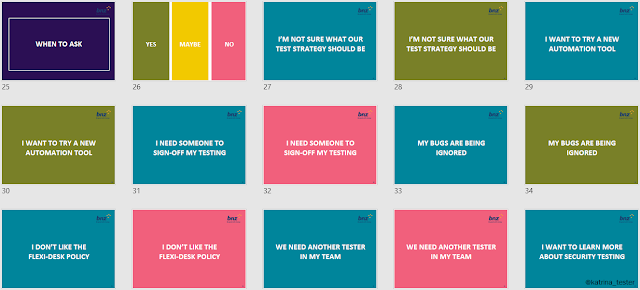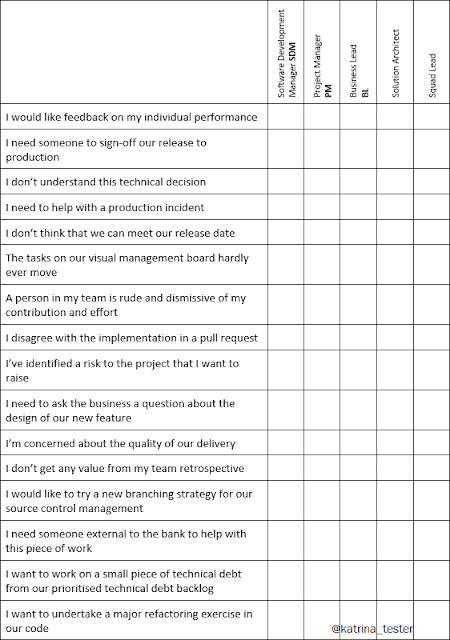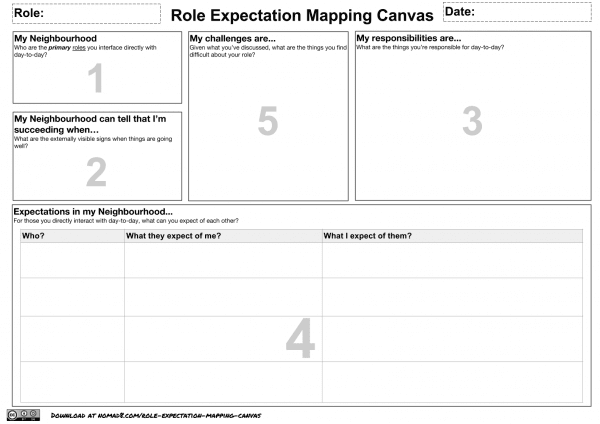I lead a team of Test Coaches, which is still a relatively unusual role in our industry. As a Test Coach I was part of a number of conversations about my role. As we scaled the team of coaches...
I lead a team of Test Coaches, which is still a relatively unusual role in our industry. As a Test Coach I was part of a number of conversations about my role. As we scaled the team of coaches and I took a leadership position, these conversations increased in frequency and audience.Uncertainty about roles can happen when there are:
new roles created, or� multiple people performing the same role in different areas of an organisation, or� a number of roles that interact closely with a shared purpose.
In all three situations there are alternatives to drawing up a traditional RACI matrix, which can feel like marking territory when executed poorly. I prefer collaborative approaches to role definition. This article explains how to use an interactive activity with practical scenarios, a role expectation mapping canvas, and a rainbow roles overview.
Interactive activity with practical scenarios
When our test coaching function grew there were questions about how we would operate. Some people had preconceptions about our role being similar to test management. Others had concerns that we might overstep boundaries toward people leadership or setting technical direction.To kick-off our expanded services we scheduled a session for all the testers in the organisation, along with their line managers and delivery leadership, to explain test coaching. Attended by over 120 people, part of the agenda was an interactive activity to clarify and define our role.
We asked the audience to pair up with someone that they wouldn't normally work with, preferably someone from another department. We gave each pair a questionnaire that listed 13 scenarios and asked them to consider whether or not they would involve a Test Coach in each situation.
The scenarios in the activity were descriptive and practical. They were framed in the first person to encourage people to imagine themselves in each situation. Not just "bugs are being ignored", but "my�bugs are being ignored".
 |
| Questionnaire for Test Coach role |
Where a pair disagreed, they were allowed to record a two responses, however we encouraged discussion of differing opinions in the hope that a single answer could be found.
Once this task was complete, we handed out sets of coloured paper squares to each pair. Each set included green, yellow, and pink sheets to represent yes, maybe, and no respectively.
We used a set of slides to work through the questionnaire. Each question was displayed on a slide with a blue background, a neutral colour. I read out the question and each pair in the audience had to hold up a coloured card that corresponded to their answer. The card was green if they would engage a Test Coach, pink if they would not, and yellow if they were unsure.
Asking each pair to vote kept the audience engaged, and helped us to understand where there was confusion about our role. Where the responses were mixed, or where they consistently differed to what we expected the response to be, we gained insight into situations where there might be overlap with other roles or where we might have to clarify the intent of our involvement.
 |
| Slides that explain when to ask a Test Coach |
This approach to defining our role was well received and created a clear set of expectations about how to interact with the new Test Coaches.
I have since applied the same type of exercise in a delivery tribe with five leadership roles. Both the team and the leaders were uncertain of who should be driving the outcome in some instances. I adapted the activity so that the columns of the questionnaire represented each role.
 |
| Questionnaire for support roles in agile delivery |
The audience split into pairs who discussed a set of scenarios, choosing which role they would expect an action from in each situation. We used five different coloured cards for the audience to share their thoughts, one colour per role. With more roles in scope and a larger audience, there was robust conversation about some of these scenarios and the activity was longer than when it was focused on a single role.
Role expectation mapping canvas
The test coaches in my organisation are part of a wider team that includes technical and practices coaching. As the team grew there was confusion, particularly from newer coaches, about our responsibilities. During a team offsite day, we split into our specialist coaching disciplines for an activity to discuss this.My manager facilitated the activity using the role expectation mapping canvas developed by Tony O'Halloran based on ideas from Jimmy Janlen's description of role expectation mapping. Each subset of coaches in the team completed the activity together i.e. all of the Test Coaches worked on a single canvas.
The canvas is separated into five parts:
Roles that you work with Externally visible signs of success Things that you are responsible for Expectations of the people that you interact with Challenges that you face
 |
| Role expectation mapping canvas |
As the manager of the test coaching function and the longest serving test coach, I decided to act as the scribe for this activity. I refrained from contributing to the conversation and instead focused on recording it. This was difficult, but my silence created space for the other test coaches to express their ideas, opinions and doubts.
As each test coach worked in a different neighbourhood the purpose of the activity was to understand what was common. Across each department in our organisation there are consistent stakeholder roles, indicators of success, responsibilities, expectations and challenges. The canvas was useful to focus conversation and capture these, to create clarity and alignment in our function.
This canvas was designed to be applied in a delivery team to clarify relationships between different roles. Though I am yet to use it in that context, I can see how it might be successful.
Rainbow roles
A tribe that I interact with as a Test Coach has other test leadership roles at a tribe and team level, along with delivery managers who have an interest in quality. This environment had created confusion in the test chapter of the tribe and conflict in direction for testing.To resolve this, a meeting was scheduled for the people directly involved in test leadership. The facilitator drove the discussion towards a RACI matrix, which was distributed to the participants of the meeting after the session.
In this context the RACI matrix was usefully divisive for the leadership audience. It clearly showed which role was responsible for which task. However I felt that we needed to present something else to the rest of the tribe. Something that illustrated how we had agreed to work collaboratively towards a shared purpose, rather than defining our separate territories.
I converted the information from the RACI matrix into a one-page overview with five streams that showed how the test leadership team would work together on common testing goals: strategy, standards, day-to-day support, recruitment, and personal development.
 |
| Rainbow Roles |
It isn't miles away from the original, but the information is presented in simple language and intentionally illustrates our different contributions towards a single result. The rainbow colours started as a joke to further emphasize our aspirations of harmony, but became core to the identity of this diagram: rainbow roles.
It is not unusual for roles to become murky as the organisation evolves. In each example we found clarity through collaboration using tools that emphasized how different people work together. I encourage you to treat confusion or conflict as an opportunity to positively engage with others about your role and theirs.
For another take on this topic, you might also want to read�Riot's agile team leadership model: A story of challenging convention�by Ahmed Sidky and Tricia Broderick.







